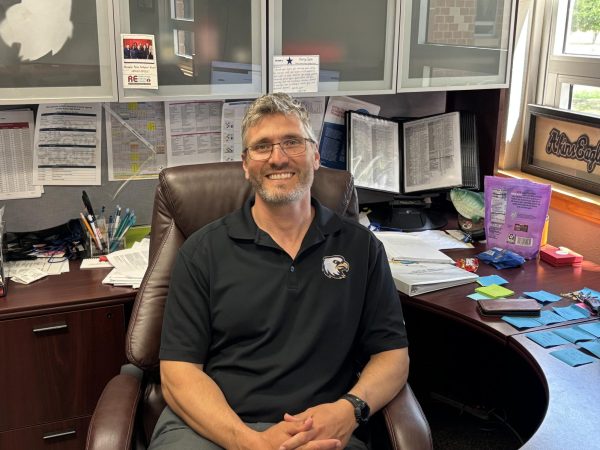Some district monitoring is sufficient for student use
February 25, 2020
In 2017, the students of Akins High School were given a Chromebook to improve student learning by providing a device to access assignments posted on the district’s online learning platform.
Students had to sign a contract to ensure that they will respect the device and not do anything inappropriate or use it for something else other than school learning or studying.
However, one feature that students may not be aware of is that the district also has an automatic monitoring system that flags online searches that students make, targeting words that involve self-harm or harming others. If a student searches for self-harm related keywords on these district-provided Chromebooks — even at home — it could trigger a welfare safety check from law enforcement, a counselor or an assistant principal.
If you have read the district’s “acceptable use policy” closely, this would likely not be a surprise, but some students have accidentally triggered these kinds of safety checks while researching school projects or as a joke.
The Austin school district is required by the Children’s Internet Protection Act (CIPA) to install these kinds of monitoring programs to provide guardrails to keep students safe. The companies that provide these services believe that this kind of monitoring can prevent harm and save lives in an age when mass school-shootings and student suicides prompted by cyberbullying seem to be on the rise.
However, some privacy and free speech advocates are concerned that these programs go too far. In an article published online by Quartz, Girard Kelly, the director of privacy review at Common Sense Media, said that good-faith safety efforts keep increasing the level of monitoring “until you have a sort of surveillance state in the classroom.”
Some critics believe this kind of digital surveillance might have a chilling effect on students’ freedom of expression. In other words, if students know they’re being monitored, they might censor themselves from speaking their minds.
While many students may be unaware that this kind of tracking is taking place, eventually some will find out when more reports of safety checks. Districts like Austin ISD require parents to sign blanket consent agreements to use technology in the classroom. For example, the district’s Chromebook guidelines state that “Electronic mail transmissions and other use of the electronic communications shall not be considered confidential and may be monitored at any time by designated staff to ensure appropriate use for educational or administrative purposes.” This goes for personal devices using the district’s network at school, as well.
To prevent students from getting off-task, teachers have the option to use GoGuardian, which lets teachers monitor our Chromebooks. For example, it allows teachers to close browser tabs, lock devices, review a browser history. Students I know have had mixed opinions about being monitored by the district. In my opinion, I feel like the school should continue monitoring the usage of Chromebooks and other school computers. Students should keep in mind that these
Considering the fact the Chromebooks belong to the district, it seems only right that they should be able to monitor what students are doing on them. It is the school district’s property and the administrators should be protective about what students search and do on the Chromebooks and school computers.









